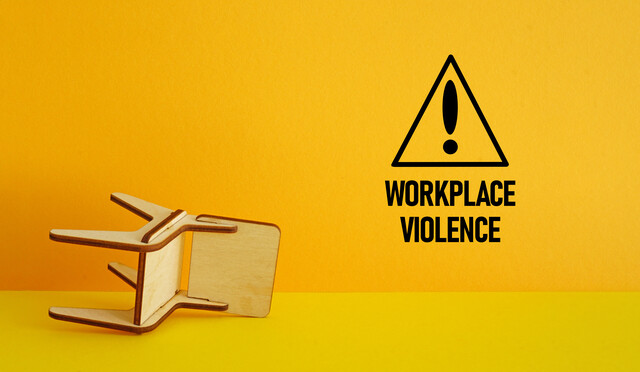With the prevalence that sexual harassment carries in today's society, one would think that it's an issue that has only arisen in modern times. After all, wouldn't society have found a decent solution by now if it's been around longer than that? Unfortunately, no. Although society has become better at acknowledging and addressing sexual harassment, it's still a major issue that has plagued society literally for centuries even before it had a name to be referred by.
Sexism in Society Since...Forever?
Sexual harassment has long been viewed as a women's issue and that's largely been the case throughout history. Societal sexism, even when factoring differences between cultures, has played a strong role in determining gender roles both in and out of the workplace. Tasks coded to a particular gender like domestic work for women, labor-intense work for men have helped reinforce those roles with public disdain directed at anyone, man or woman, who steps out of what is viewed as acceptable for them, and helped foster elements of sexual harassment as proper social behavior. With that in mind, it's easy to think that everyone stayed in their assigned lane and any deviations that did occur were rare and quickly corrected back.
When women began demanding more rights, it also brought public attention to the mistreatment many of them faced in the workplace and in society. Much of that treatment had been accepted as a normal part of life and their efforts generated an awareness that it possibly wasn't as okay as everyone thought. Like with the 1975 Icelandic strike, women did not go about these movements subtly or quietly. In both instances, their efforts were rewarded with real social change and reform.
Labor Rights -- The first push for women's labor rights started in 1844 with the formation of the Lowell Female Labor Reform Association, a union of female textile workers who testified before the Massachusetts state government against dangerous regulations that put them in physical danger at work. This started a push in the U.S. for improved working conditions and treatment for all employees, not just women. It also brought about multiple pieces of legislation and laws for women's rights and workplace safety, including the Nineteenth Amendment, which granted women suffrage, which is the right to vote.
Wartime and Conflict in the 20th Century
Sexual harassment became slightly less of an issue during times of conflict. Whether it was because most of the men in society were off fighting or that women became crucial in keeping society and the war effort at home running in the interim isn't clear. However, the focus in working environments during these times meant that behavior and actions not necessary for the task at hand were frowned upon as a distraction. The role that women, who are often the targets of sexual harassment at work, played during these times also increased and they became valuable assets. Women went to war alongside male soldiers, both in roles that were socially acceptable like nurses, cooks, laundry workers, etc. and unacceptable like prostitutes, soldiers, doctors, etc. During the U.S. Civil War, it's thought that anywhere from 400 to 750 women disguised themselves as men and went into battle alongside their husbands, brothers, sons, and fathers.
The roles that women play in conflicts have evolved and become more public in the last century or so. In addition to serving in typically male-dominated professions like mechanics, factory workers, etc., on the home front, women also served as code breakers, spies, pilots, and snipers. In some cases, they were favored over men for these roles. Girl Guides--in the UK, they were basically Girl Scouts--were used as messengers by MI5 during World War I because they were better behaved, quieter, and more secretive than Boy Scouts. Bletchley Park, the Allied Forces codebreaking headquarters during World War II, was heavily staffed by female personnel who did the vast majority of the operation's work. One of the most highly decorated and feared units of World War II, the 588th Night Bomber Regiment, was an all-female Soviet Air Force group that dropped over 23,000 tons of bombs on the German army and are best known historically as The Night Witches. Some of the greatest and most crucial spies for the Allied effort in World War II were women, such as Vera Atkins, Nancy Wake, Pearl Cornioley, Krystyna Skarbek, and Virginia Hall.
Post War Pushback -- After World War II ended, all of the women in the workforce who were celebrated and valued were pushed out of their jobs in favor of their male peers returning home. They were pressured to leave through threats or intimidation and were fired if they did not leave on their own. Domestic life was thrust upon American women from all sides whether they liked it or not, and what roles remained for them in the workforce were limited and low-paying. Those who rejected their domestic roles and/or sought out non-female coded jobs met with discrimination and opposition in addition to the harassment they'd find in socially acceptable ones. This postwar era is identified by most as a time of two "booms" -- an economic boom and the "baby boom" -- with little regard to a third "boom" of blatant workplace sexual harassment.
1964: The Civil Rights Act and Title VII
Discrimination and harassment of any kind was deemed acceptable socially and legally before the Civil Rights Act was put into law. It's still the chief anti-discrimination law in the U.S., but its passing is still considered to be a major event. The law itself places prohibitions on discriminatory practices based on facets of a person's race, color, sex, religion, or national origin, although "sex" was a last minute addition that almost didn't make it. It could be applied to decisions related to promoting, firing, and hiring, but also any other employment-related decisions and terms that can be made in the workplace like wages.
Title VII of the law also created a new federal office, the Equal Employment Opportunity Commission or EEOC. The EEOC's job then and now was to implement the law and address violations. In the years since, the EEOC has overseen the enforcement of several Civil Rights and protection laws passed in the U.S., as well as investigations into violations, establishing educational and aid programs, and handling lawsuits.
1975: Naming at Cornell University
Strangely enough, sexual harassment did not have an actual name and barely fit under any legal standing for much of its history. For the most part, instances were not seen as an actual legal problem but a private interpersonal problem. The phrase "sexual harassment" wasn't coined until a group of women in Ithaca, New York, gathered together to discuss their experiences at work in May 1975 and then it wasn't heard in public until the following August. A professor at Cornell University, Lin Farley, used it at a public hearing in New York City on women's issues and was quoted by the New York Times. The name fit what so many women had experienced, and still are, that it's stuck ever since.
Despite Farley's speech and the increasing outcry about workplace sexual harassment throughout the 1970s, including in 1970 when the female staff of Newsweek magazine publicly filed an official complaint against the publication regarding rampant harassment and discrimination from its owners and management, it was several years before it was legally recognized. In 1980, the EEOC updated official guidelines on unlawful sex discrimination to include sexual harassment. However, it wasn't fully recognized in a legal setting until 1986 in the Supreme Court's ruling of Meritor Savings Bank v. Vinson regarding the different forms of sexual harassment and longer still, 1998, before same sex sexual harassment was formally recognized.
1991: Anita Hill
Sexual harassment didn't garner much national attention as a serious issue until the 1991 testimony of Anita Hill against Clarence Thomas, a nominee for the U.S. Supreme Court. Hill had previously worked for Thomas in the Department of Education and EEOC and had been subjected to sexual harassment from him throughout that time. She alleged that he had constantly included explicit sexual commentary and topics, including pornography and bestiality, in discussions at work. Thomas carried a reputation as a courteous gentleman and denied every single accusation from Hill and the other women who later came forward.
Although he was eventually confirmed to the Supreme Court, the entire event brought workplace sexual harassment to the public in a way that many had not yet encountered. For many, it was how they learned and developed a better understanding about sexual harassment and its associated legal elements. The "he-said-she-said" nature of the proceedings were unprecedented and brought sexual harassment at work firmly into the public's mind. Regardless of what side anyone stood on, it was hard to deny that the situation prompted changes and actions. In the weeks and months following Hill's testimony, the number of sexual harassment claims filed with the EEOC more than doubled as many victims developed a better understanding of what could be done.






























